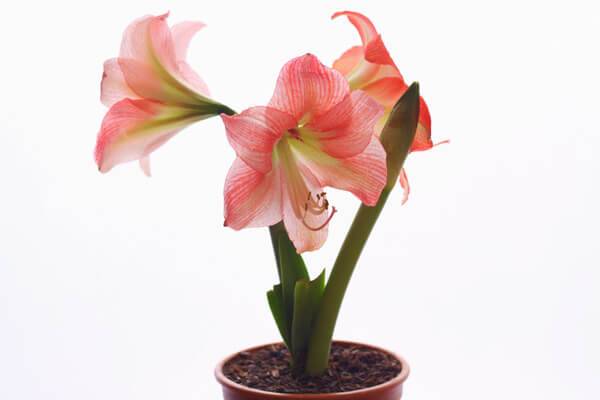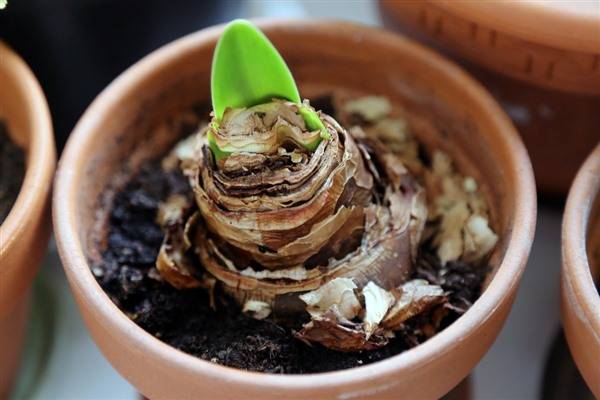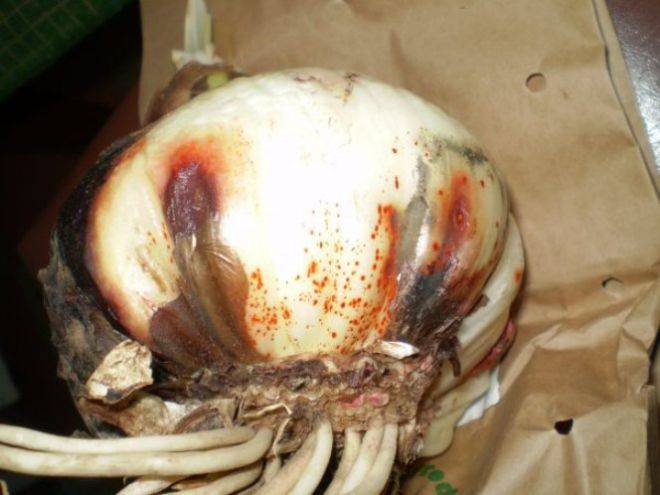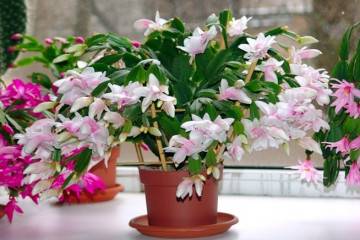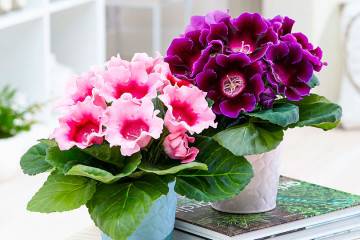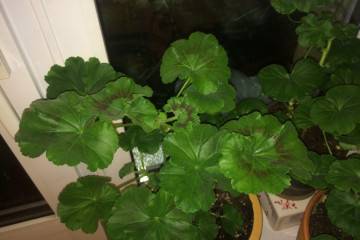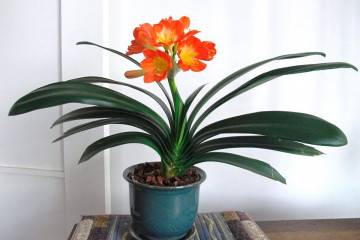Why hippeastrum does not bloom - only leaves grow
Content:
Houseplant lovers often face the problem of lack of flowers and do not know what to do. For example, hippeastrum - it requires certain conditions of detention, and without them it is not able to please its owner with colorful flowers. There are many reasons why hippeastrum does not bloom, and only after their identification and elimination of deficiencies in care can we expect the appearance of a peduncle.
Features of the flowering period of the hippeastrum
The flower belongs to the genus of bulbous amaryllis plants, found naturally in South America. There are about 80 varieties and 600 hybrids of hippeastrum.
Flowering differs in duration - up to 2 months, begins after a dormant period. After waking up, a long peduncle is thrown out - 30-85 cm, with 2 or 4 flowers, tubular or funnel-shaped, the diameter of each is 25-30 cm.
The color is diverse, there may be:
- dark red;
- orange;
- scarlet;
- pink;
- milky white varieties.
Why hippeastrum does not bloom at home, but only releases leaves
There are many factors due to which the plant refuses to release flower stalks.
Hippeastrum does not bloom at home:
- With a lack of nutrients, the lack of potassium and phosphorus elements does not allow the development of a strong and healthy peduncle. Experienced flower growers carry out top dressing every 14 days, adding superphosphate and finely ground wood ash to the soil. Preparations with nitrogen will not help - the plant will begin to grow foliage. Nitrogenous top dressing can cause fungal infection of the hippeastrum.
- In the absence of a transplant, the plant is planted in minimal containers, and it quickly absorbs all nutrients from the soil. Too narrow and shallow pot leads to the braiding of the entire earthy coma with the root system. The solution to the problem is to transplant the bulb into a container 3-4 cm larger than the previous one. The voids formed in it are filled with fresh substrate.
Reasons for the lack of flowering, what to do
Why does hippeastrum not bloom at home when leaving: a violation of temperature and light conditions, a large container, pest infestation often lead to a lack of peduncle development.
Whether the plant is resting, the alternation of the vegetation and dormancy phases
Without proper rest, the culture is not able to fully recover and will not be able to enter the flowering phase. In front of her, the plant actively absorbs nutrients and directs all its forces to the development of the peduncle.
To avoid problems, after the withering of the flowers, the conditions of care that are usual for the hippeastrum cannot be changed.Soil moistening and top dressing according to the standard principle continue for the next month. At their end, the seed boxes are removed, and the peduncle and foliage itself are removed after they die off on their own: you can determine a convenient time by changes in the level of their color and density.
If the leaves remain elastic, then it is not recommended to touch them - they do not interfere with the plant being in the resting phase. So that it does not begin to develop actively, it is provided with partial shade and high humidity.
The bulb is too deep
When planting, the onion is buried in the soil by 25 or 50%. The peculiarity is associated with the rapid development of the root system - the plant is firmly held in the ground even under such conditions. Shallow planting prevents pests from attacking the hippeastrum, rotting - with excessive watering.
Incorrect containment conditions
Hippeastrum requires increased comfort, otherwise you can forget about beautiful flowers. If the temperature regime is not observed in the room or there is no distinction between the periods of activity and rest, then the plant will begin to protest.
In the summer, it requires temperatures above 20 degrees and up to 70% humidity. Hippeastrum has a bad attitude to spraying - it is forbidden to carry out them even in a drought.
Pot too big
A deep and bulky container can be the next factor for the lack of flowers. In this case, the plant prefers the development of the main and daughter bulbs, the root system and the green part. There are no nutrients left for the formation of peduncles.
To solve the problem, the culture is transplanted into a more suitable container or the bulb is expected to grow to its maximum size. The distance between the roots and the walls of the pot should be within 25-30 cm.
The presence of diseases and pests
Experts attribute insect attacks or diseases to the sources of the lack of buds. They will be discussed below.
Stagonosporosis or "red bulb burn"
It is a dangerous type of infection. Symptoms of its appearance include brownish-reddish stains and small dotted blotches. The transition of the disease to the aboveground part of the plant threatens its death.
The appearance of the first signs requires active action: the bush is pulled out of the pot and all affected areas, including 4-6 mm of healthy tissue, are cut off with a sharp disinfected knife.
Sections are treated with activated carbon powder and Funzadol mixed in equal proportions. After cleaning the root system from soil, the plant is transplanted into the next box with fresh substrate.
The earth is additionally cleaned with a hot solution of potassium permanganate, the bulb is planted superficially - this will help control its general condition. After the risk of recurrence of infection has disappeared, the soil is poured into the container and the hypeastrum is continued to look after as usual.
Anthracosis and late blight
It affects the plant when it is planted in open ground. The infection develops from fungal spores, which, with sufficient moisture, easily move to healthy parts of the bush.
Symptoms of the lesion are dark spots on the foliage and bulb, a decrease in their elasticity. Treatment consists in excision of all affected areas, removal of the affected leaves, and coverage of all sections with a mixture of activated charcoal and Fundazole. The soil is cleaned with 1% Bordeaux liquid.
Pests
Insect attacks on the culture greatly weaken it, the result of attacks is the absence of buds, a deterioration in the general condition. If you ignore the problem, the plant quickly dies. Common pests affecting hippeastrum include:
- spider and onion mites;
- mealybug;
- scabbard.
To reduce the likelihood of insect damage, open soil is treated with copper sulfate before transplanting. The found parasites are washed off with a napkin previously soaked in soapy water. If the measure does not give the expected effect, then re-treatment must be done with one of the insecticides - throughout the green part of the plant. The procedure is performed twice, with an interval of 14-21 days.
The soil from the street is almost always infected with spores and larvae; before planting, it requires sterilization with hot water and special products sold in flower shops.
How to "trick" the hippeastrum and make it bloom
Inexperienced growers for a long time cannot cope with the fact that the plant does not bloom. Why force hippeastrum to throw out flower stalks? Their appearance informs about the past period of dormancy, and if the plant does not rest, it may die. In addition, the flowers are quite beautiful and are a kind of reward for the owner of the plant for good care.
How can you make hippeastrum bloom: only by fulfilling certain conditions and rules. To obtain a peduncle, the bulb must go through a dormant period. If the plant is not going to hibernation, the leaves remain green and continue to grow, then the following procedures must be performed:
- the container with the plant is placed on its side - the hippeastrum remains in the box;
- all feeding stops, watering is minimized;
- the plant is sent to a cool and darkened room;
- a month later, the green part will fade and turn yellow - at this time, it will be pruned.
An attempt to immediately put the container in an upright position can provoke the hippeastrum to wake up from sleep. He is kept in a supine position from 2.5 to 3 months - this time will be enough for him to rest and gain new strength.
A few months later, the hippeastrum will release the first leaflet, announcing the end of the resting phase. The container is transferred to its usual place, the bulb is transplanted into fresh soil. Watering and feeding is added to the schedule again - until the fourth leaf appears. After him, they stop fertilizing the earth. If all procedures were carried out correctly, then a peduncle will soon appear.
Hippeastrum is an unusual beauty plant, with a slightly capricious character. Compliance with periods of rest in winter and activity in spring, timely moistening of the soil and mineral fertilizing will allow you to admire its luxurious buds twice a year.

